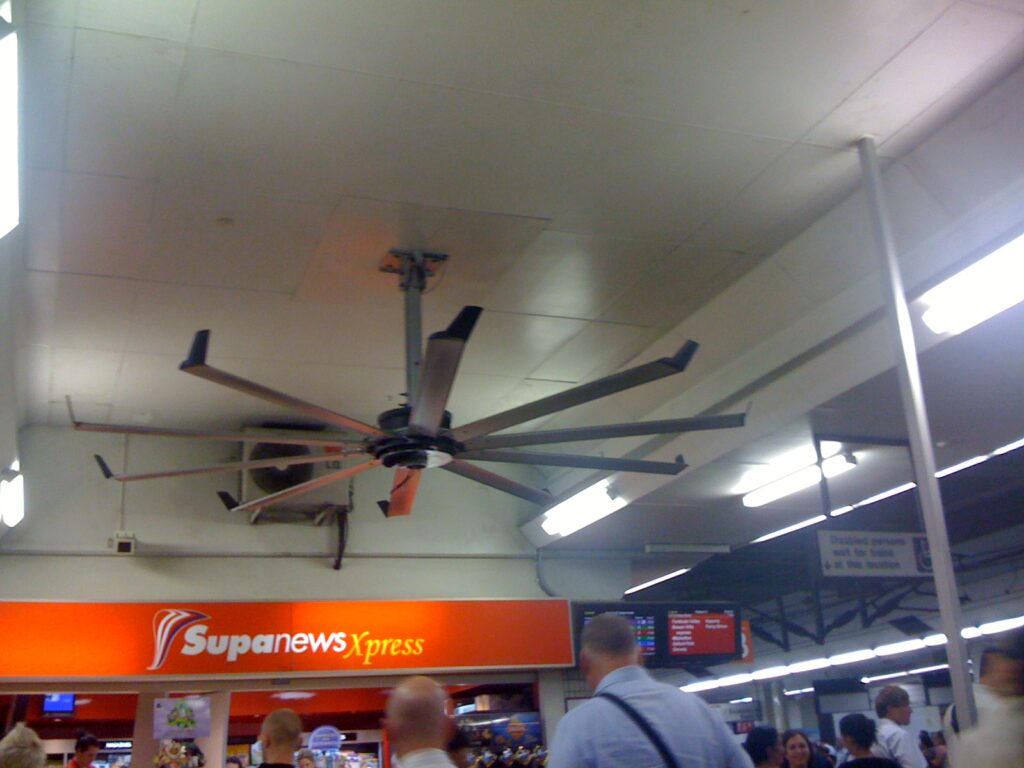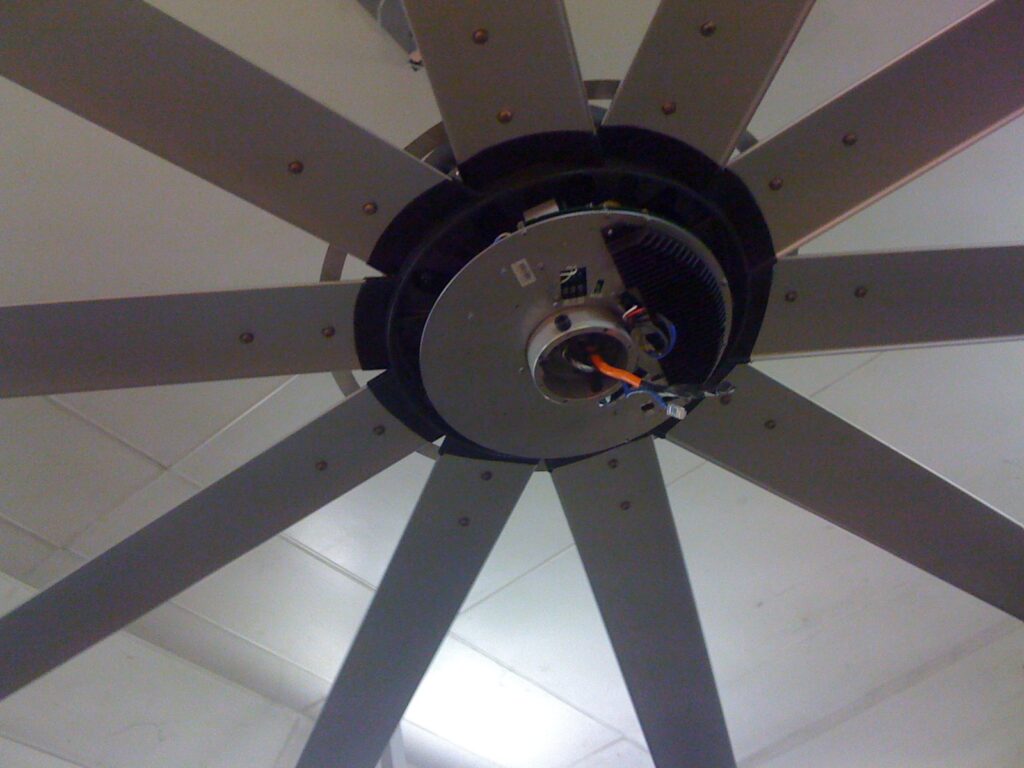It’s true: the Brisbane urban rail network and Translink SEQ do have fans. It’s just that I’m not one of them. Alright, that’s a bad pun, but the fans that have been and are being installed at Central station intrigue and irritate me.
Something that I’ve learned over my time in IT is that small errors and warnings should be taken notice of – they are almost always symptoms of an underlying error or incipient failure that is serious, even thought the symptoms themselves are not harmful.
So it is with public policy and the action of public entities in Australia, and the fans are a good symptom to take notice of.
Central station has seen several overhauls, or at least face lifts, over the past 20 years. It’s always been a hot and grubby place, but it was quite noticeable that the most recent renovation (how long ago was it? 10 years?) exacerbated the problem. An awning was installed over the concourse outside the ticket gates, which did have the probable desired effect of providing shade and some shelter from the rain.
A parenthetical rant – what is it about architects and builders in Brisbane that causes them to frequently forget that we are in a sub-tropical city prone to sub-tropical rain. If you are designing or installing an awning or veranda: please make sure that it goes all the way to the stairs, and meets up with the awning on the adjacent property. The awning at central almost protects you from heavy rain when you’re exiting the property. Sometimes.
The trouble with the awning over the concourse is that it traps heat, and during summer gets really hot very early in the day, and stays that way. Because it’s long and low, there is seldom any air flow through the space to provide cooling. The platforms have a similar problem. So the obvious solution is to install fans. The fans that are going in are effective, and have an intriguing design – huge blades, folded at the end like a long-haul airliner, moving an enormous amount of air and doing it fairly quietly.

The interesting part is how the fan installation project is progressing. The first five fans went into the concourse a few weeks before Christmas. Well, to be precise, the fans were installed, but not wired up for power. The electricians came in during the week after The Great Flood, some 8 weeks after the fans went in. Another few fans appeared on one of the platforms a few weeks later. A month on and they are still not connected to power and operating – I suspect they will be functioning when winter comes.
I have a horrible suspicion that I can blame Microsoft Project (or PowerPoint), and a machine for enacting projects made up of people with very limited power to actually do anything. You see, I am guessing the MS Project plan and resulting PowerPoint presentation has continued into a concrete set of actions, and went something like this:
- Budget
- Concourse Fans
- buy fans
- hire builders
- deliver fans
- install fans
- hire electricians
- wire up fans
- Platform 3/4 Fans
- buy fans
- hire builders
- deliver fans
- install fans
- hire electricians
- wire up fans
- Platform 1/2 Fans
- buy fans
- hire builders
- deliver fans
- install fans
- hire electricians
- wire up fans
- Platform 5/6 Fans
- buy fans
- hire builders
- deliver fans
- install fans
- hire electricians
- wire up fans
- Project completion meeting.

With each step carefully timetabled and resourced in sequential order. And the people who drew up the plan are not the people who carry out the plan, and do not have the power or experience to think up a better plan. And the people who carry out the plan do not have the authority to deviate from the plan. And the people who budget for the installation only care about the final bottom line dollar amount, and the managers above these three groups care only that the project was completed by the time specified by the Microsoft Project plan. And at no point is there an individual with the combined authority, experience and common sense who is allowed to stand up and say “hang on, this is bloody stupid”.
Which brings me back to my underlying concern. It is not that any individual in the process and machine of public policy and application of policy is venal, or lazy, or incompetent. I’m certain that essentially all of them are competent, hard working and dedicated within a narrowly defined work scope. A significant number of public entities responsible for upkeep of public infrastructure appear to have grown so large, and accreted so many policies and procedures and protocols, that a significant part of their resources are tied up with managing the process and protocols rather than delivering the service. Taking that thought a bit further, I see many indications in the behaviours of the QRail CityTrain / TranslinkSEQ duo that both struggle and probably fail to keep their core business in focus. Certainly if you listen to the frequent and repeated complaints from the heads of the organisation that train travellers are rorting the system by having their daily commute subsidised by (Insert Semi-Random Dollar Value Here) from other tax payers, you have to think that they miss the point: from the top of the QRail CityTrain / TranslinkSEQ entity to the bottom, their absolute top priorities are to:
- get passenger bums on passenger seats safely and comfortably;
- get the services from source to destination safely and reliably on time
- don’t run over any kittens or nuns.
So, a plea to the project manager of the Fan Project: your job is to get the fans installed as quickly and cheaply as possible, not to make sure that the power point presentation for each week uses the corporate template, is reviewed according to protocols, and loaded into the CMS on time.
